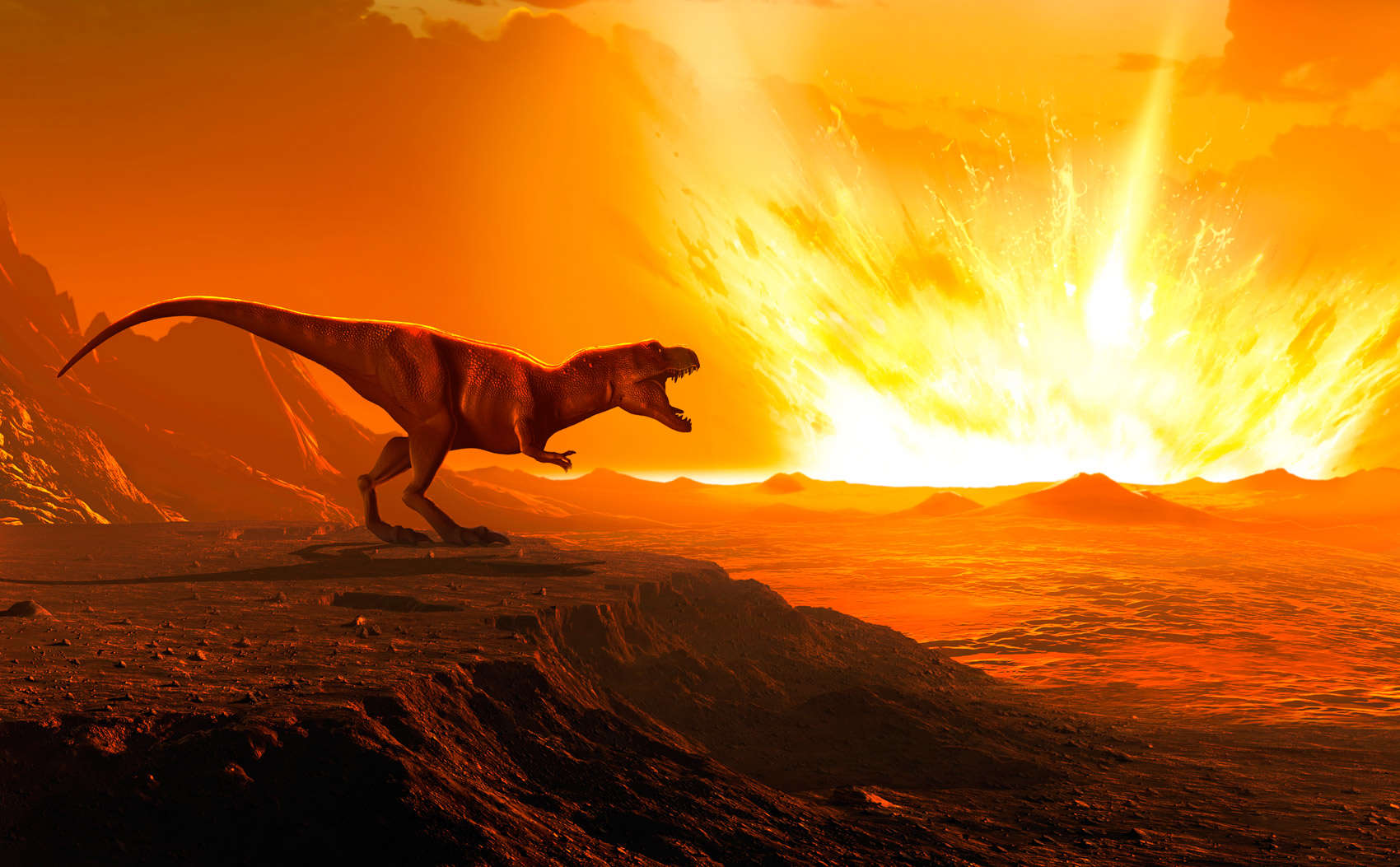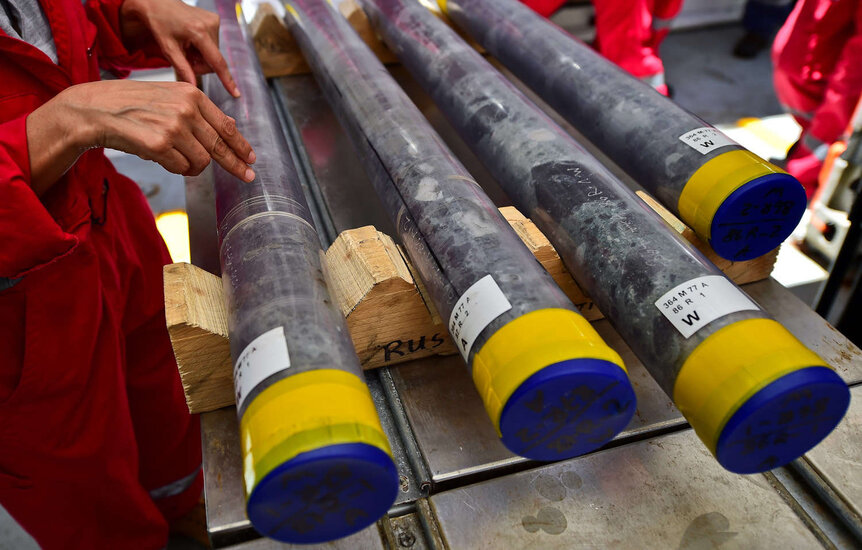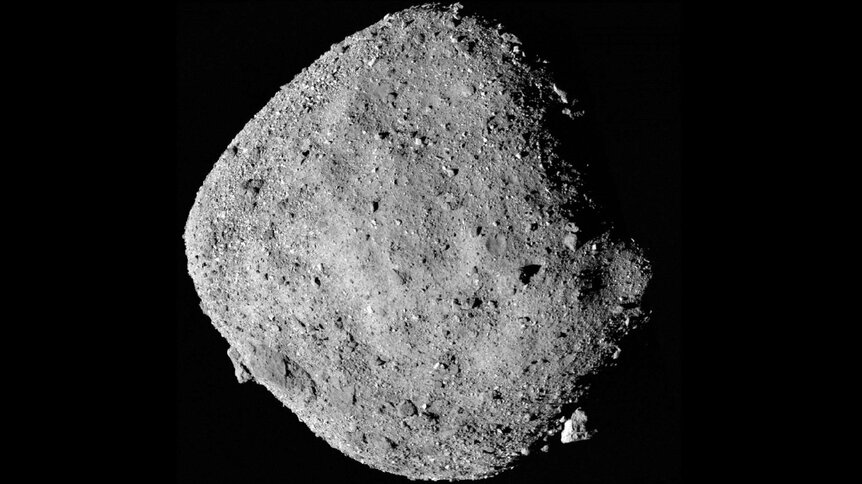Create a free profile to get unlimited access to exclusive videos, sweepstakes, and more!
Narrowing down the source of the dinosaur-killer asteroid

Where did the dinosaur-killer asteroid come from?
This is a question of great scientific and titillating public interest. We know that 66 million years ago an asteroid 10 kilometers in size slammed into the Earth just off the coast of what is now the Yucatan Peninsula in the Gulf of Mexico, carving out the 180-kilometer-wide Chicxulub crater and setting off a complicated chain of events that killed off something like 75% of all species on the planet including all the non-avian dinosaurs, so yeah, understanding it seems important.
For a while it was thought it could be a comet, but samples of the impactor retrieved from various sites around the world dated to the time of the impact strongly suggest it was a kind of asteroid called a carbonaceous chondrite. A chondritic asteroid is one that is primitive, formed when the solar system was very young, and is composed of small grains of material that haven’t undergone any real change since. Chondrites make up the vast majority of meteorites that fall to Earth, more than 80%. On the other hand, carbonaceous ones, which are high in carbon content and therefore dark, are pretty rare, making up just 3-5% of meteorites that fall to Earth.
So the impactor comes from a rare population of asteroid. Here’s where things get a little strange: When you look at the biggest craters on Earth, presumably from the biggest asteroids, something like half look to be produced by carbonaceous chondrites. So while they’re rare overall, the big ones seem to like hitting Earth.
Also, it’s known that these kinds of big dark asteroids tend to orbit in the outer part of the asteroid belt, farther from the Sun. Yet theoretical studies have shown that we should expect very few impactors from that part of the belt.
So we have contradictory ideas here. Where are these big dark rocks coming from? And how often do they hit us?
To investigate, a team of astronomers modeled how asteroids in the main belt behave. This has been done before, but they did something a little different.
What they wanted to find out was how main belt asteroids get knocked into orbits that get them near Earth (too near, if you know what I mean). In general this is due to the gravity of Jupiter, which has a strong effect, but is limited to certain regions of the belt — what are called resonances, where the asteroid’s orbital period is a simple ratio of Jupiter’s. In this case, the asteroid orbits the Sun, say, three times for every once Jupiter does, or 8 to 3, or 5 to 2. When that happens the rock gets a periodic kick in orbital energy from the giant planet, and that can, over time, send it plummeting down toward the Sun … and Earth.
Another force is called the YORP effect, and is due to sunlight subtly influencing the asteroid’s orbit. This has been modeled many times, but in general the models have concentrated on the parts of the belt where the resonance effects are strongest.
What’s new here is the team looked at the entire asteroid belt as a potential source of big, dark, threatening rocks. They also looked preferentially at big rocks, ones with a diameter 5 kilometers or larger, and that also orbit the Sun farther out than 375 million kilometers on average; using real data from the WISE observatory (an infrared satellite that observed asteroids) that means 42,721 objects.
They used computer simulations to model the physics of how the asteroids move over the course of a billion years, including effects from all the planets (except wee Mercury, which is too small to affect them) and the YORP effect. In general, YORP changes an asteroid’s orbit very slowly over time until it gets into a resonance, and then the rock gets moved rapidly into a new and potentially threatening orbit.
What they found is surprising. About half of the main belt big rocks that get moved into near-Earth orbits come from the middle to outer parts of the asteroid belt! This is 10 times higher than previous estimates, which said asteroids from this part of the belt were rare. But this jibes with the result that something like half the big rocks that hit us are carbonaceous chondrites, since those come from the outer belt. If true, this resolves that tension. They find that the chances of the dinosaur killer coming from the middle to outer main belt are 60%.
They also found that one asteroid 5 kilometers wide or larger escapes from the main belt into a near-Earth trajectory roughly every 100,000 years. Those tend to break up or fall into the Sun after about a hundred million years or less, but some impact the inner planets. According to their simulations, we can expect roughly 25 impacts from asteroids bigger than 5 km in size every billion years, or about one every 40 million years. A dinosaur killer 10 km in size is more rare, once every 250 – 500 million years. Those numbers line up fairly well with what’s seen as far as big impacts on Earth.
So does this solve the mystery? Well, kinda. It does show that a lot more rocks from the outer belt can eventually hit us, which is a big step. There are hints that while big dark rocks come from the outer belt, smaller dark ones come from the inner belt, which suggests the forces acting on these rocks is different for different parts of the belt. Also, the inner belt seems to produce fewer big rocks that can impact us than older models predicted. It’s not clear why.
There are still lots of things left to figure out here, but that’s typical. It takes massive computers a long time to do the simulations, so as they get faster it becomes easier to run various models and change parameters. In general that means we learn more since new things are tried and found to work… or importantly not to work, since sometimes old ideas turn out not to be right. That’s science.
Every step we take here gets us a little bit closer to understanding what happened all those millions of years ago when the dinosaurs had a Very Bad Day™. If we want to make sure we have a future — at least concerning asteroid impacts — then learning more about the behavior of these rocks is a Very Good Idea.





























